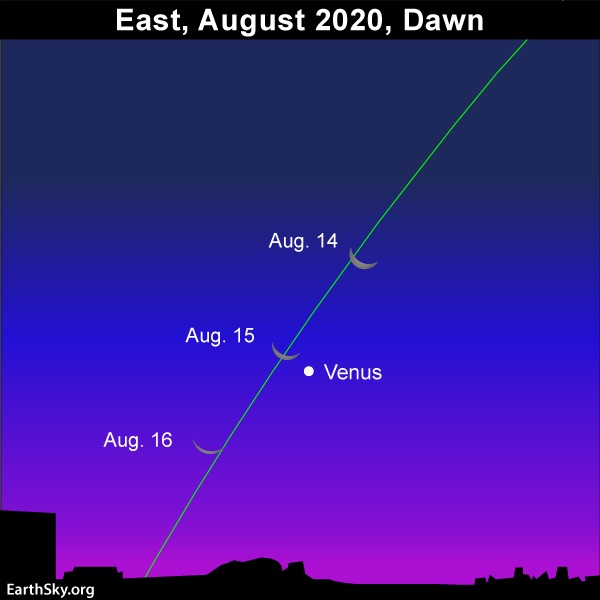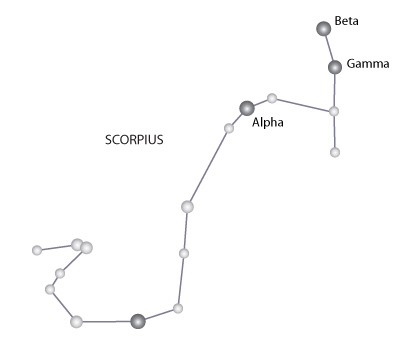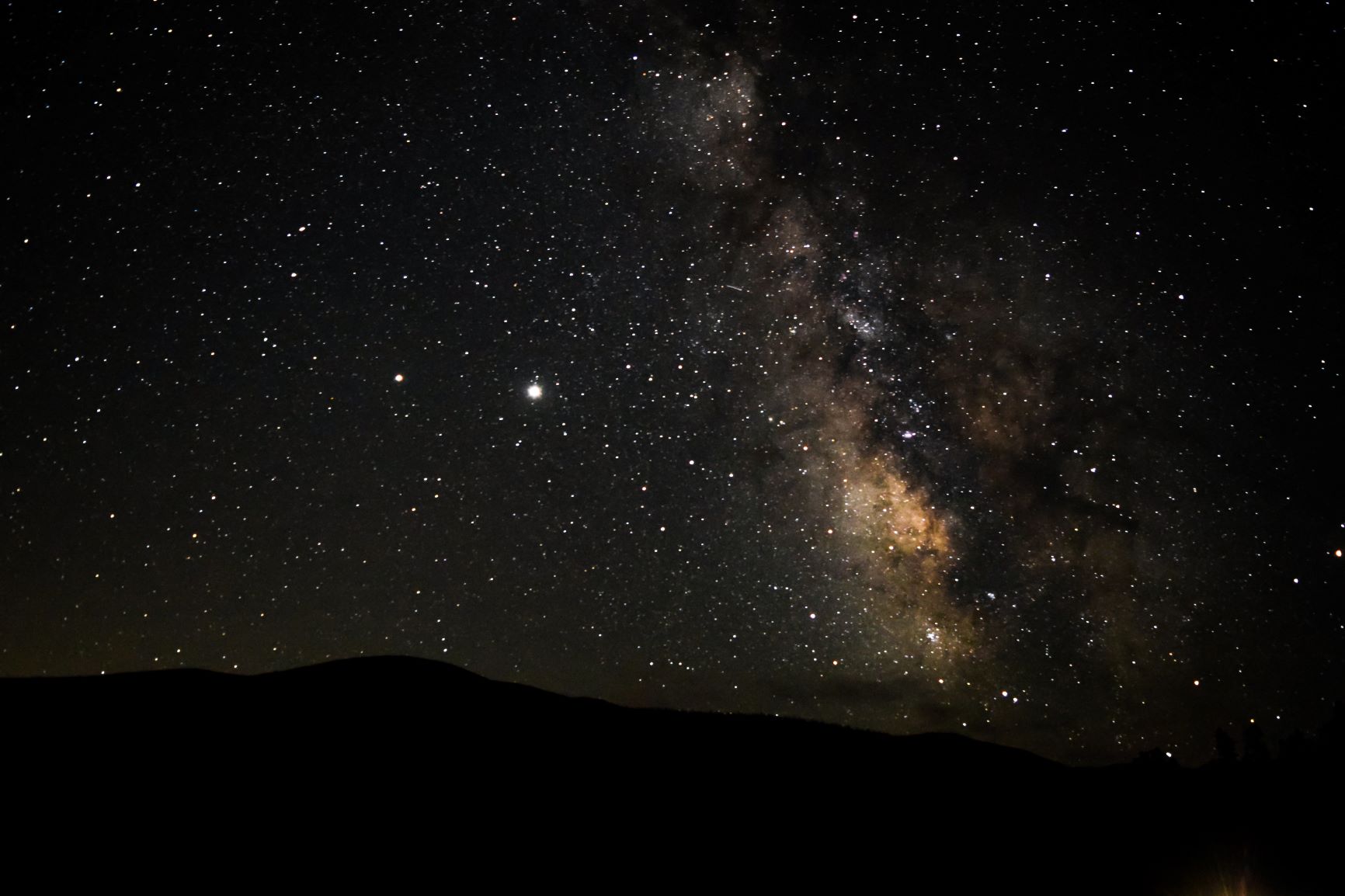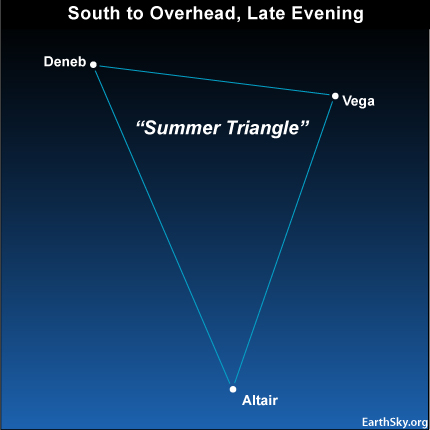What to Look for in the Late August Night Sky
Special Stories
13 Aug 2020 3:00 AM
The peak of the Perseid Meteor Shower may be behind us, but there are still plenty of astronomical events to look for while night time temperatures remain (mostly) pleasant through the end of August.
If you're reading this closer to mid-August, you still have a chance to see plenty of Perseid meteors! Here's what you need to know.
Spotting the International Space Station is always a great activity and is easy to do thanks to this handy tool. This article will highlight some of the bigger events of the month, but for detailed explanations and even more events, check out the "tonight" feature at EarthSky.
 The moon wanes as Venus shines brightly in the early morning sky. Courtesy: Earthsky.org
August is a fantastic month to watch the "morning star" shine brightly above the horizon. Venus reaches its greatest elongation (it appears farthest from the sun) on August 13th, which means it will appear well above the horizon and will be shining brightly! Check out this great explanation of Venus's elongation if you're interested in learning more.
Shortly after reaching its greatest elongation, Venus will also be appearing quite close to the waning crescent moon in the eastern sky. This will be an excellent time to find Venus and potentially photograph the two brightest objects in the night sky together.
The moon wanes as Venus shines brightly in the early morning sky. Courtesy: Earthsky.org
August is a fantastic month to watch the "morning star" shine brightly above the horizon. Venus reaches its greatest elongation (it appears farthest from the sun) on August 13th, which means it will appear well above the horizon and will be shining brightly! Check out this great explanation of Venus's elongation if you're interested in learning more.
Shortly after reaching its greatest elongation, Venus will also be appearing quite close to the waning crescent moon in the eastern sky. This will be an excellent time to find Venus and potentially photograph the two brightest objects in the night sky together.
 Scorpius. Courtesy NASA/Chandra X-Ray Observatory.
Antares is a beast. It's one of the largest known stars, more than several hundred times larger than our own yellow sun, and the brightest star in the constellation Scorpius. Also known as "Alpha Scorpii," the star is the heart of the Scorpion shape and can be observed with a reddish hue, after all it is a red supergiant.
The moon will be passing just a few degrees above Antares in the southwestern sky on the evening of August 25th, passing through the "left pincer" of the constellation.
Scorpius. Courtesy NASA/Chandra X-Ray Observatory.
Antares is a beast. It's one of the largest known stars, more than several hundred times larger than our own yellow sun, and the brightest star in the constellation Scorpius. Also known as "Alpha Scorpii," the star is the heart of the Scorpion shape and can be observed with a reddish hue, after all it is a red supergiant.
The moon will be passing just a few degrees above Antares in the southwestern sky on the evening of August 25th, passing through the "left pincer" of the constellation.
 Jupiter and Saturn shine brightly near the Milky Way in July. Photo credit: Rob Bradley
Jupiter and Saturn shine brightly near the Milky Way in July. Photo credit: Rob Bradley
Summer and the Milky Way go hand in hand. While late spring and early summer often offer the best viewing of the densest part of the our galaxy, August and September offer some of the last chances to view this most spectacular part of the Milky Way before it aligns with the sun toward the end of the year, making it impossible to view. The summer triangle, featuring the bright stars Deneb, Vega, and Altair, will be relatively easy to find, rising shortly after sunset. Vega will rise first and, as the earth rotates, will gradually be replaced by Deneb. In the middle of this triangle, you will find the star cluster of the Milky Way.
To best view the Milky Way, find a dark place away from light pollution, and look to the South.
Wile August features arguably the greatest meteor shower of the year, September is filled with lots of Astronomical events to look forward to as well, including the Autumnal Equinox. Look for the September calendar late this month and happy stargazing!
The summer triangle, featuring the bright stars Deneb, Vega, and Altair, will be relatively easy to find, rising shortly after sunset. Vega will rise first and, as the earth rotates, will gradually be replaced by Deneb. In the middle of this triangle, you will find the star cluster of the Milky Way.
To best view the Milky Way, find a dark place away from light pollution, and look to the South.
Wile August features arguably the greatest meteor shower of the year, September is filled with lots of Astronomical events to look forward to as well, including the Autumnal Equinox. Look for the September calendar late this month and happy stargazing!
August 13-16: Venus shines near the Moon
 The moon wanes as Venus shines brightly in the early morning sky. Courtesy: Earthsky.org
August is a fantastic month to watch the "morning star" shine brightly above the horizon. Venus reaches its greatest elongation (it appears farthest from the sun) on August 13th, which means it will appear well above the horizon and will be shining brightly! Check out this great explanation of Venus's elongation if you're interested in learning more.
Shortly after reaching its greatest elongation, Venus will also be appearing quite close to the waning crescent moon in the eastern sky. This will be an excellent time to find Venus and potentially photograph the two brightest objects in the night sky together.
The moon wanes as Venus shines brightly in the early morning sky. Courtesy: Earthsky.org
August is a fantastic month to watch the "morning star" shine brightly above the horizon. Venus reaches its greatest elongation (it appears farthest from the sun) on August 13th, which means it will appear well above the horizon and will be shining brightly! Check out this great explanation of Venus's elongation if you're interested in learning more.
Shortly after reaching its greatest elongation, Venus will also be appearing quite close to the waning crescent moon in the eastern sky. This will be an excellent time to find Venus and potentially photograph the two brightest objects in the night sky together.
August 19th: New Moon
While the New Moon itself isn't anything to see, this is a great time to look for faint constellations and galaxies, since the light from the ultra-bright Moon will be not be hindering your ability to see those harder to find objects. Waiting until after midnight will yield the best viewing conditions, if our lower atmosphere cooperates in your location.August 25th: The Moon and Antares
 Scorpius. Courtesy NASA/Chandra X-Ray Observatory.
Antares is a beast. It's one of the largest known stars, more than several hundred times larger than our own yellow sun, and the brightest star in the constellation Scorpius. Also known as "Alpha Scorpii," the star is the heart of the Scorpion shape and can be observed with a reddish hue, after all it is a red supergiant.
The moon will be passing just a few degrees above Antares in the southwestern sky on the evening of August 25th, passing through the "left pincer" of the constellation.
Scorpius. Courtesy NASA/Chandra X-Ray Observatory.
Antares is a beast. It's one of the largest known stars, more than several hundred times larger than our own yellow sun, and the brightest star in the constellation Scorpius. Also known as "Alpha Scorpii," the star is the heart of the Scorpion shape and can be observed with a reddish hue, after all it is a red supergiant.
The moon will be passing just a few degrees above Antares in the southwestern sky on the evening of August 25th, passing through the "left pincer" of the constellation.
August 28th-29th: The Moon, Jupiter, and Saturn
During the last few evenings of August, the Moon will say hello to the dynamic duo of gas giants, passing by in the evening sky. On August 28th, the Moon will move directly above the biggest planet in our Solar System, while Saturn will be tagging along, just to the east. This is a great time to capture a few photos with the trifecta together and to view Saturn's rings! Saturn appears brightest in our sky when its rings are tilted at their greatest inclination toward the Earth, around 27 degrees. During these late August nights, the inclination will be a bit over 20 degrees, adding to Saturn's shine.All of August: The Summer Triangle & Milky Way
 Jupiter and Saturn shine brightly near the Milky Way in July. Photo credit: Rob Bradley
Jupiter and Saturn shine brightly near the Milky Way in July. Photo credit: Rob BradleySummer and the Milky Way go hand in hand. While late spring and early summer often offer the best viewing of the densest part of the our galaxy, August and September offer some of the last chances to view this most spectacular part of the Milky Way before it aligns with the sun toward the end of the year, making it impossible to view.
 The summer triangle, featuring the bright stars Deneb, Vega, and Altair, will be relatively easy to find, rising shortly after sunset. Vega will rise first and, as the earth rotates, will gradually be replaced by Deneb. In the middle of this triangle, you will find the star cluster of the Milky Way.
To best view the Milky Way, find a dark place away from light pollution, and look to the South.
Wile August features arguably the greatest meteor shower of the year, September is filled with lots of Astronomical events to look forward to as well, including the Autumnal Equinox. Look for the September calendar late this month and happy stargazing!
The summer triangle, featuring the bright stars Deneb, Vega, and Altair, will be relatively easy to find, rising shortly after sunset. Vega will rise first and, as the earth rotates, will gradually be replaced by Deneb. In the middle of this triangle, you will find the star cluster of the Milky Way.
To best view the Milky Way, find a dark place away from light pollution, and look to the South.
Wile August features arguably the greatest meteor shower of the year, September is filled with lots of Astronomical events to look forward to as well, including the Autumnal Equinox. Look for the September calendar late this month and happy stargazing!All Weather News
More